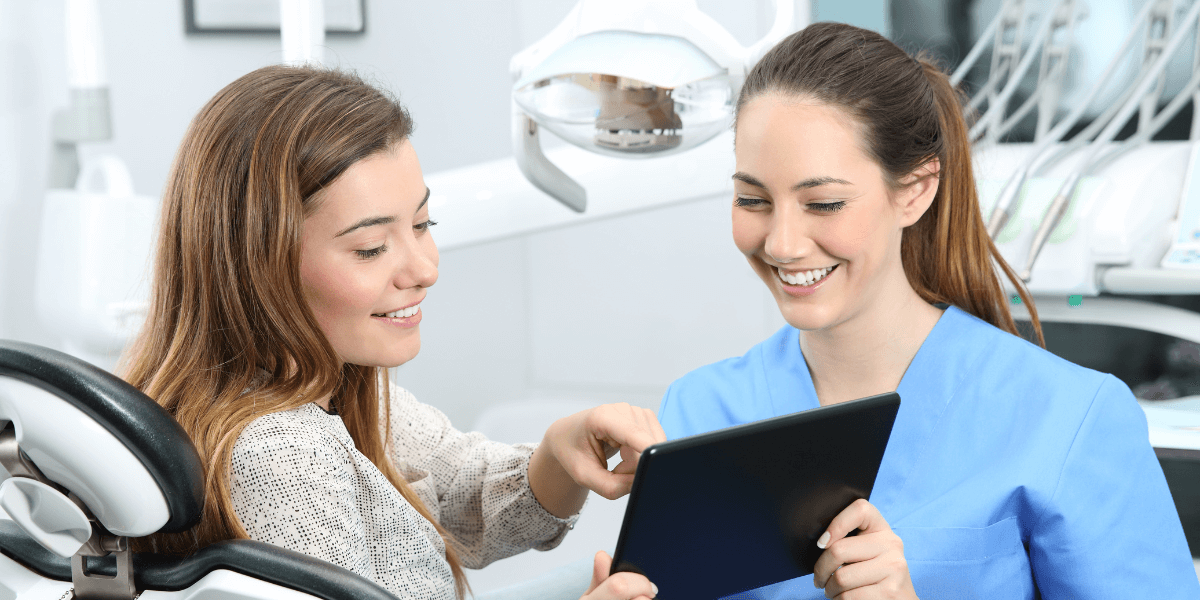
There is an urgent need for dental practices to prioritize periodontal disease diagnosis and treatment, due to its prevalence and link to systemic disease. Author Becky Kiddoo advocates for the development of comprehensive periodontal programs within dental offices, emphasizing careful planning, team collaboration, and patient education as a means to improve patient outcomes.
A prevalent problem
Research shows that roughly 42% of adults 30 years and older suffer from periodontal disease, which can have negative effects on both oral and systemic health. [1] Periodontal disease and the bacteria associated with it are covered thoroughly in hygiene school. Yet, most dental offices underdiagnose periodontal disease in their practice. Some common barriers are poor patient education, lack of time, and out-of-pocket expenses. Periodontal disease is progressive, and without treatment, it can cause tooth loss and exacerbation of other systemic issues such as heart disease and diabetes. This highlights the need for greater attention to this issue.
Building a successful perio program
To create an effective periodontal program, careful planning, alignment, and accountability are essential. Dental hygienists play a crucial role in early detection, prevention, and education, ensuring that patients receive the care they need. Use this article as a guide to help you build a successful program.
- Establishing objectives for your periodontal program: Before implementing a new program, start by evaluating your team’s current protocols. A helpful approach is to compare your existing guidelines with the latest standards, such as the AAP 2017 staging and grading classification system. This will provide a starting point for discussing disease identification and treatment protocols with your team. It is important to involve all relevant staff, including hygienists, dentists, and periodontists, in the program’s development and discussion.
- Diagnostics: To ensure consistency in diagnostics, you must identify which tools will be used to measure disease. This entails making decisions about which diagnostics to collect and when, such as updating and evaluating periodontal charting, radiographs, and health histories. There are helpful flow charts available to guide you through the next steps in treatment, or your office can create its own.
- Team Education: To ensure success in identifying and treating periodontal disease and its impact on overall health, it is essential to educate your entire team on your mission. Consider providing training courses to enhance their skills, such as effective periodontal charting or administration of anesthesia for improved patient comfort.
- Consistent Communication: When educating patients and putting together treatment plans, the entire team should use uniform language. As a group, determine what each procedure will be called and ensure that everyone utilizes the same terminology. This approach minimizes confusion among patients and fosters an understanding of the distinctions between the various procedures.
- Patient Education: When educating patients, use simple language and visual aids like flip charts, photos, or diagrams. Explain the role of the dental hygienist in treating disease and how patients can contribute to their own care at home by controlling the bacterial load. Create a comfortable environment where patients can ask questions and feel encouraged to take an active role in their periodontal health.
- Assessment: Once the program is in place, the team should decide how to evaluate success. This could involve tracking periodontal procedures and establishing team objectives to strive towards. Or designating a team member to conduct chart audits for treatment alignment. Consider patient feedback via a survey assessing overall comprehension of the discussed procedures.
Continuing commitment
Once the program is up and running, take a moment and celebrate all the team has accomplished! However, remember that patient care is not a one-time achievement, but an ongoing commitment. As new studies and technologies emerge, it’s important to reassess and make changes to ensure high-quality care. Together, by implementing these changes, dental professionals can work to promote better patient education and oral/systemic health.
Learn more about Becky Kiddoo and find her published articles by visiting her profile.
Register as an RDH Connect member to gain the connections, experience, & exposure necessary to grow your career.
- American Dental Association. (2022, June 9). Retrieved from https://www.ada.org/resources/research/science-and-research-institute/oral-health-topics/periodontitis





